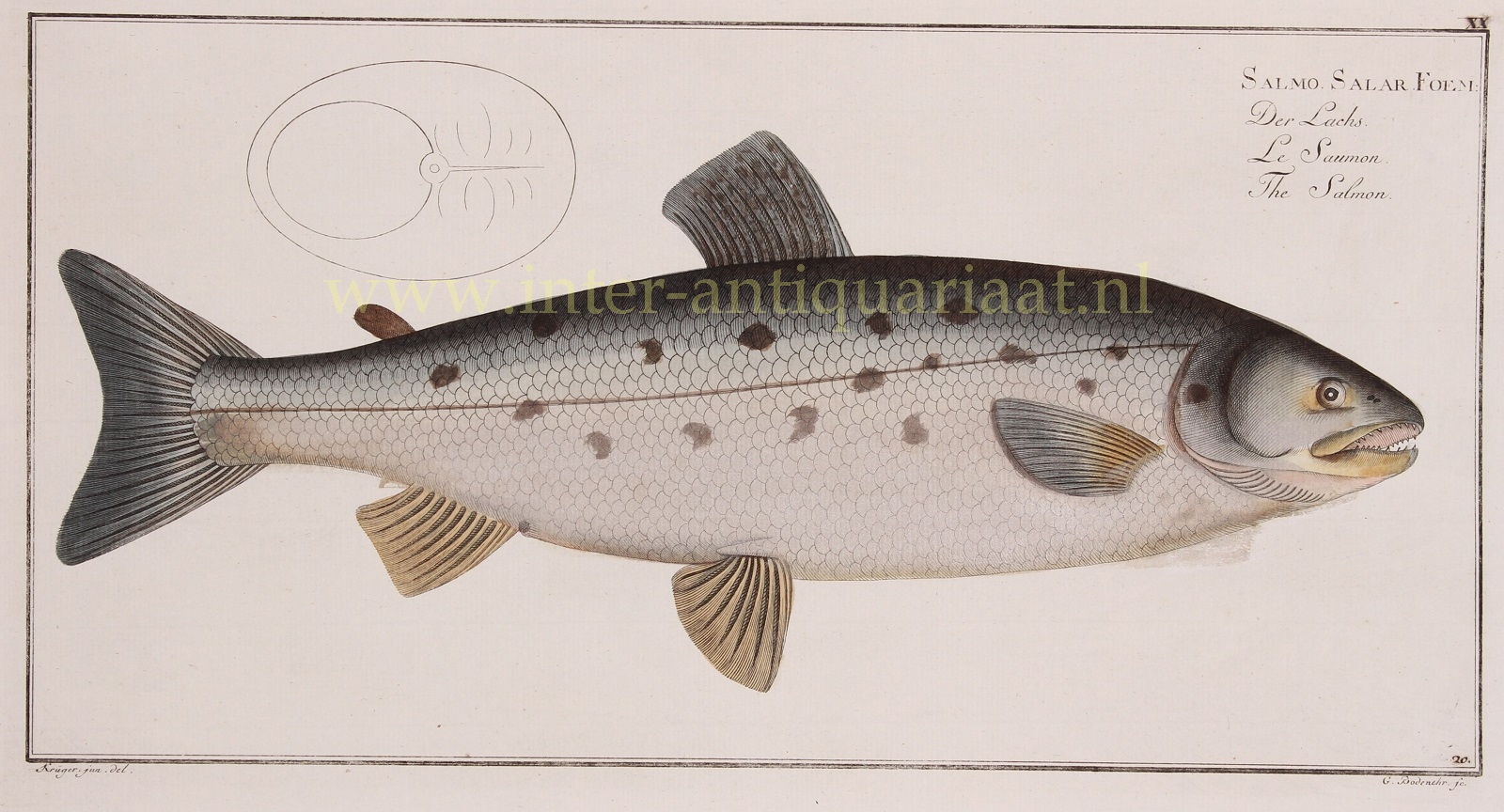THE ATLANTIC SALMON
“Salmo Salar Foem/Der Lachs/Le Saumon/The Salmon” (plate 20), copper engraving made by Ludwig Schmidt after the drawing of Krüger jr, for Markus Elieser Bloch’s “Allgemeine Naturgeschichte der Fische” published in Berlin between 1782 and 1795. With original hand colouring. Size: 19 x 38 cm.
According to Bloch in his Allgemeine Naturgeschichte der Fische, a 12-volume, beautifully illustrated comprehensive work on fishes: “This salmon belongs especially well in the northern ocean, from which it mostly goes into the streams and rivers connected with it, in order to deposit its spawn. It is therefore found not only in all those European countries which are connected to the ocean by rivers, but also in Kamchatka, Greenland, Newfoundland, and the northern parts of America. How strong the instincts are which have been implanted in animals for the reproduction of their species can also be seen in this fish. It leaves the sea, which is teeming with creatures, where it finds plenty of food, goes into the rivers left alone by man, tries to avoid the many ingenious reenactments of the fishermen (for how many traps does it encounter, for example, in the Rhine, from the North Sea to Basel!) and knows how to overcome a thousand obstacles on his long journey in order to lay its eggs in suitable places. Its spawning season, which lasts six to eight days, falls in southern regions, such as in Brittany, as early as May, in northern regions, however, as in Sweden, in July. It is remarkable that the salmon can find the water in which it spawns just as well as the swallow can find the building on which it nests.”
Bloch’s labour on the “Allgemeine Naturgeschichte der Fische” occupied a considerable portion of his life, and is considered to have laid the foundations of the science of ichthyology. The publication was encouraged by a large subscription, and it passed rapidly through five editions in German and in French. Bloch made little or no alteration in the systematic arrangement of Peter Artedi and Carl Linnaeus, although he was disposed to introduce into the classification some modifications depending on the structure of the gills. To the number of genera before established, he found it necessary to add nineteen new ones, and he described 276 species new to science, many of them inhabitants of the remotest parts of the ocean, and by the brilliancy of their colours, or the singularity of their forms, as much objects of popular admiration as of scientific curiosity.
Bloch is considered the most important ichthyologist of the 18th century.
Price: Euro 350,-


